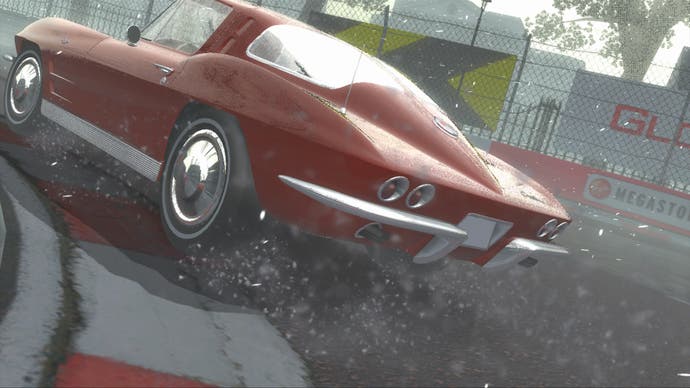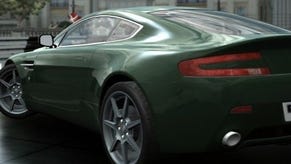Project Gotham Racing 4
Finesse the fight.
Appropriately enough for a game that introduces motorbikes, PGR4 restores balance to a series that was beginning to wobble. PGR3 wasn't sure whether to be a fast racer or a game of technical driving. With PGR4, Bizarre Creations was sure it could do both, and so it proves.
Key to achieving that are several things. Tweaks to the Kudos system, which rewards and encourages stylish driving, work in tandem with revisions to the handling model, while new ideas about track design (bundled together under the awkward "Racification" banner) subtly promote good driving practices without shoving them through the windscreen.
The influence of these elements is felt throughout. Arcade mode, the new home of PGR's traditional hunt for top-scoring medals, is less esoteric. Cone Sprints - tasks that involve navigating a regular track strewn with cone gates as quickly as possible - are able to emphasise the importance of speed despite their supremely technical requirements, with no loss of appeal. The two concepts, once conflicting, are now snugly entwined.
This harmony between the two extremes of what Kudos and high performance cars respectively imply for a driving game also have an amusing added benefit: it's now actually less jarring to encounter partisan disciplines, like Super Cone Sprint, which involves navigating courses made entirely of cones and penalises you for straying outside their boundaries. Before, tasks like this were a symptom of PGR's inconsistency, but PGR4 charts a path toward them that nullifies their potential negative influence.
These changes alone would have restored PGR to higher marks, but Bizarre certainly hasn't stopped there. PGR4 is the first time the developer has been able to take stock, perhaps even since it finished Gotham's precursor, Metropolis Street Racer, and that retrospection hangs like a broad grin across the face of the game. Everywhere there is delightful evolution.
Speed Challenge tasks, for example, used to involve preserving speed through a single tricky turn in order to register a high speed through a camera trap. In PGR4, you have to maintain performance and skill across four linked equivalents, reducing the possibility of fluke success.

Track design is also improved, but more potently so is track selection. The amazing corkscrew ascents and hairpins of Quebec and the high speed cornering of Macau circuits prove to be a welcome complement to the return (and refurbishment) of PGR3's host cities.
Also important was the decision to split single-player pursuits into Arcade and Career modes. The former will satisfy people who spent hours tearing PGR3's style system apart in search of the game's most lustrous medals, but the latter is a less biased affair, closer to something like TOCA Race Driver.
Set out as a revolving, year-long calendar of events, it moves you between a variety of disciplines in a structured way, with various mini-championships, invitation and one-off events, and as your driving matures so too does the range of tasks available.
That range is greatly increased by a back-of-the-box bullet-point: weather effects. Blustery rain and icy surfaces radically alter race requirements, amplifying the difficulty somewhat but also feeding into a similarly broadened Kudos system (and have the added benefit of making an already brilliant-looking game look even more amazing).

Kudos now comfortably rewards speed as well as style. Traditional rewards for powersliding, handbrake use, completely clean sections and passing manoeuvres slot into a framework bolstered by rewards for holding a good racing line and achieving and holding speeds in excess of the once-magic 170mph.
Visual feedback is much better, too. As you tick past certain thresholds, the game gives you stars, eventually culminating in a five-star trick and a brief fanfare at the top of the screen, after which you can keep feeding the beast with skill and verve, or dial it back in order to bank the points. As ever, the risk of striking a surface and losing your gains gives each competitive race a supplementary infusion of risk. PGR4 is also more forgiving of slight brushes and upsets, allowing for surprisingly strong collisions with the barriers, but without reducing the appeal of hardcore pursuits like Arcade's tougher goals.
There is even time to play into the new Kudos star system with Superstar tasks, where the objective is to obtain stars, not Kudos, meaning that you have to end and restart style sequences artificially. This is perhaps a step too far toward the bad old days of style over speed, but it remains a guilty pleasure.
Both single-player offerings are surprisingly vast, too, despite their potential to diminish one another, and offer satisfyingly diverse paths into the game. Both are accessible thanks to the range of available difficulty brackets, but neither discriminates particularly. Arcade simply lets you dial the challenge up or down task by task, while Career asks you to choose an over-arching difficulty.









